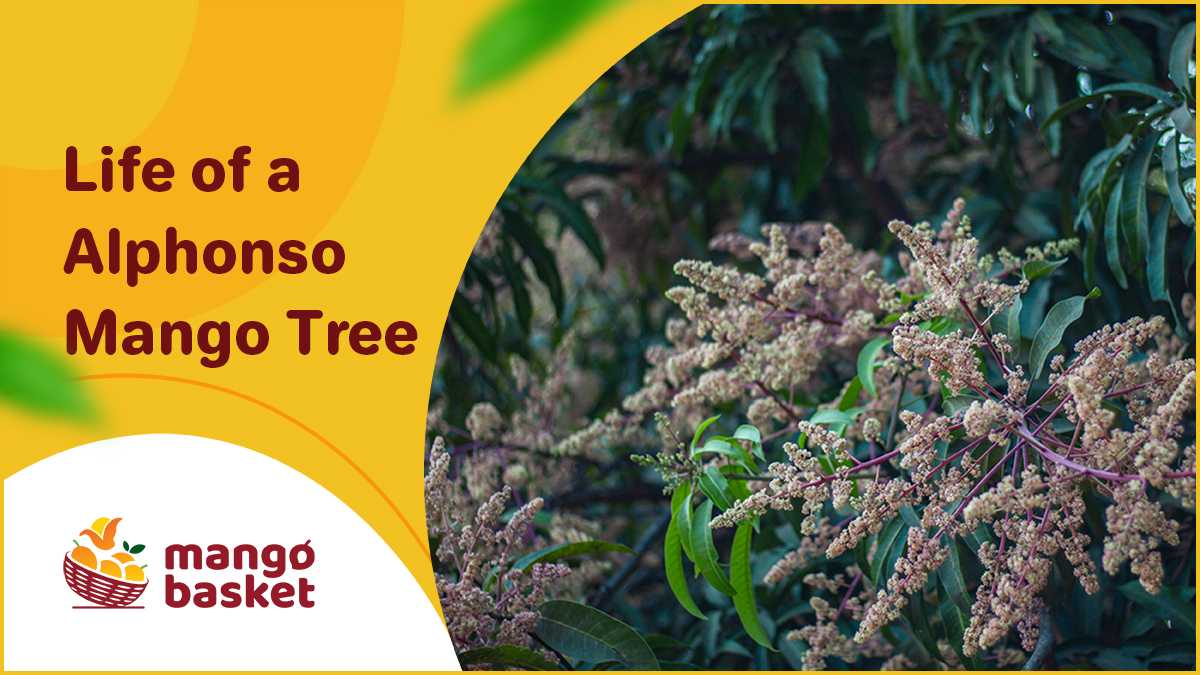Life of a Alphonso Mango Tree

Well, everyone gets this thing in mind about mangoes that for how many years a mango tree can survive and especially of Alphonso tree. Each and everyone in the world loves mangoes. Within the entire range of mangoes, Alphonso mangoes are the most loved ones.
Many people worldwide of different ages, including young and old, enjoy the amazing aroma and its superb taste. These are the main reasons why everyone loves them. The season in which mangoes are found is of a short time.
People can eat them at any time of the day, whether for breakfast, dinner, or lunch. You can use them in many deserts. In this blog post, we are going to discuss the life of an Alphonso mango tree, but before discussing its actual lifespan, let’s go through its origin and the favourable conditions required for it to grow.
Life of a Alphonso Mango Tree
Origin of Alphonso mango
Well, in reality, the origin of mango goes back to ancient times. Alphonso mango is basically an Indian fruit as it was started cultivating during the Portuguese rule, which started from 1505 to the 20th century. Portuguese were great cultivators, and they always loved to experiment with grafting between trees, which they are mainly focused on doing around Goa and nearby parts. Portuguese also shipped these fruits in many other parts of the world, because of which the trading of these mangoes was a good business for them.
Conditions favourable for growing Alphonso mango tree
The mango plant is naturally favourable for growing to tropical lowlands between 25°N and 25°S of the Equator and up to elevations of 3000ft(915m). The rainfall which suits best is between 30 to 100 inches (75-200cm). The soil type that suits the most for these mango trees is having good drainage, rich, deep loam. The mango performs excellently in the sand, gravel, and even oolitic limestone.
Life of a Mango Tree
Mangoes are grown from seeds. The seeds of mangoes in Hindi are called the Amra beej. The Alphonso mangoes are not grown from seeds. Instead, they are grown using a harvesting technique called grafting. It takes up to 9 years to grow the Devgad Alphonso trees.
The technique to grow the Devgad Alphonso Mango Tree involves three steps. The first step is to cut a small twig from a mother plant. The second step is to graft the twig on a grown out stem of a mango seed of various trees. The graft is tied and wrapped using plastic tape and is completely sealed. It is planted into the soil or plastic bag under intensive care for four hours. The plants grow for the next 8 to 9 years. After they are fully grown, they start bearing fruits. The Alphonso mango trees can bear fruits up to 300 years.
Growing an Alphonso mango tree can sometimes be tricky as they require a great amount of care and favourable conditions. Different varieties of mango have different harvesting and flowering times. Alphonso mangoes are harvested and are usually available from Mid April to June.
Fresh Alphonso mangoes are a vibrant potassium source, and potassium plays a vital role in controlling our heart rate and blood pressure; these mangoes are also an excellent source of vitamin B6(pyridoxine), vitamin C, vitamin E, which are very much beneficial for our body system.
Conclusion
So in this blog post, we have discussed the origin of the Alphonso mangoes, how the Portuguese started the cultivation of these mangoes, and how it started to get transported all around the world.
We have also discussed the conditions favourable for growing an Alphonso mango tree, the rainfall quantity required for growing an Alphonso mango tree, and the soil quality needed for proper cultivation.
Also, you must now know the life of an Alphonso mango tree, how it is grown and the techniques needed in growing them correctly and at last the various nutrients that an Alphonso mango possesses and what are the benefits of these nutrients in our body system.







Leave a Reply